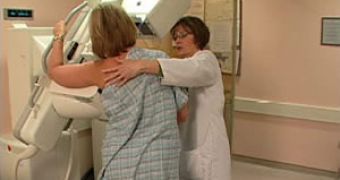A new research on breast cancer screening contradicts the US Preventative Service Task Force recommendations, saying that starting at a younger age and screening more frequently results in more lives saved.
This study was carried out by R. Edward Hendrick, PhD, clinical professor of radiology at the University of Colorado School of Medicine, and Mark Helvie, MD, director of breast imaging at the University of Michigan Comprehensive Cancer Center.
All they did was analyze the same data that was used by the task force that issued the mammography screening guidelines in November 2009, and then compared the task force’s recommendations for screening every other year in women 50-74, to American Cancer Society guidelines of screening every year in women 40-84.
The two researchers used six model scenarios of mammography screening, created by the Cancer Intervention and Surveillance Modeling Network – the same modeling data used by the task force.
Their analysis concluded that if women begin yearly mammograms at age 40, they reduce their breast cancer deaths by 40%, whereas if they start the screenings at 50 and do them every other year, they only reduce breast cancer deaths by 23%.
In other words, choosing the yearly-screening-starting-at-age-40 strategy over the other comes down to 71% more lives saved.
The task force based their recommendation on the potential harms mammography can cause, like pain during the screening exam, and anxiety from false-positive, that can trigger additional imaging or biopsy.
The study authors concluded that, on average, women aged 40-49 who are screened every year, will have a false-positive mammogram once every 10 screening sessions.
Also, once every 12 screenings they will get asked back for more tests, and once every 149 sessions, they will undergo a false-positive biopsy.
Hendrick explained that “the task force overemphasized potential harms of screening mammography, while ignoring the proven statistically significant benefit of annual screening mammography starting at age 40.
“Task force guidelines have created confusion among women, leading some to forgo mammography altogether,” adds Helvie, also a professor of radiology at the U-M Medical School.
“Mammography is one of the few screening tools that has been proven to save lives and our analysis shows that for maximum survival, annual screening beginning at 40 is best.
“This data gives women more information to make an informed choice about the screening schedule that’s best for them.”
“In addition, the panel ignored more recent data from screening programs in Sweden and Canada showing that 40 % of breast cancer deaths are averted in women who get regular screening mammography,” said Hendrick.
“Our modeling results agree completely with these screening program results in terms of the large number of women lives saved by regular screening mammography.”
According to statistics from the American Cancer Society, this year, 209,060 Americans will be diagnosed with breast cancer, and 40,230 will die from the disease.
This study appears in the February issue of the American Journal of Roentgenology.

 14 DAY TRIAL //
14 DAY TRIAL //